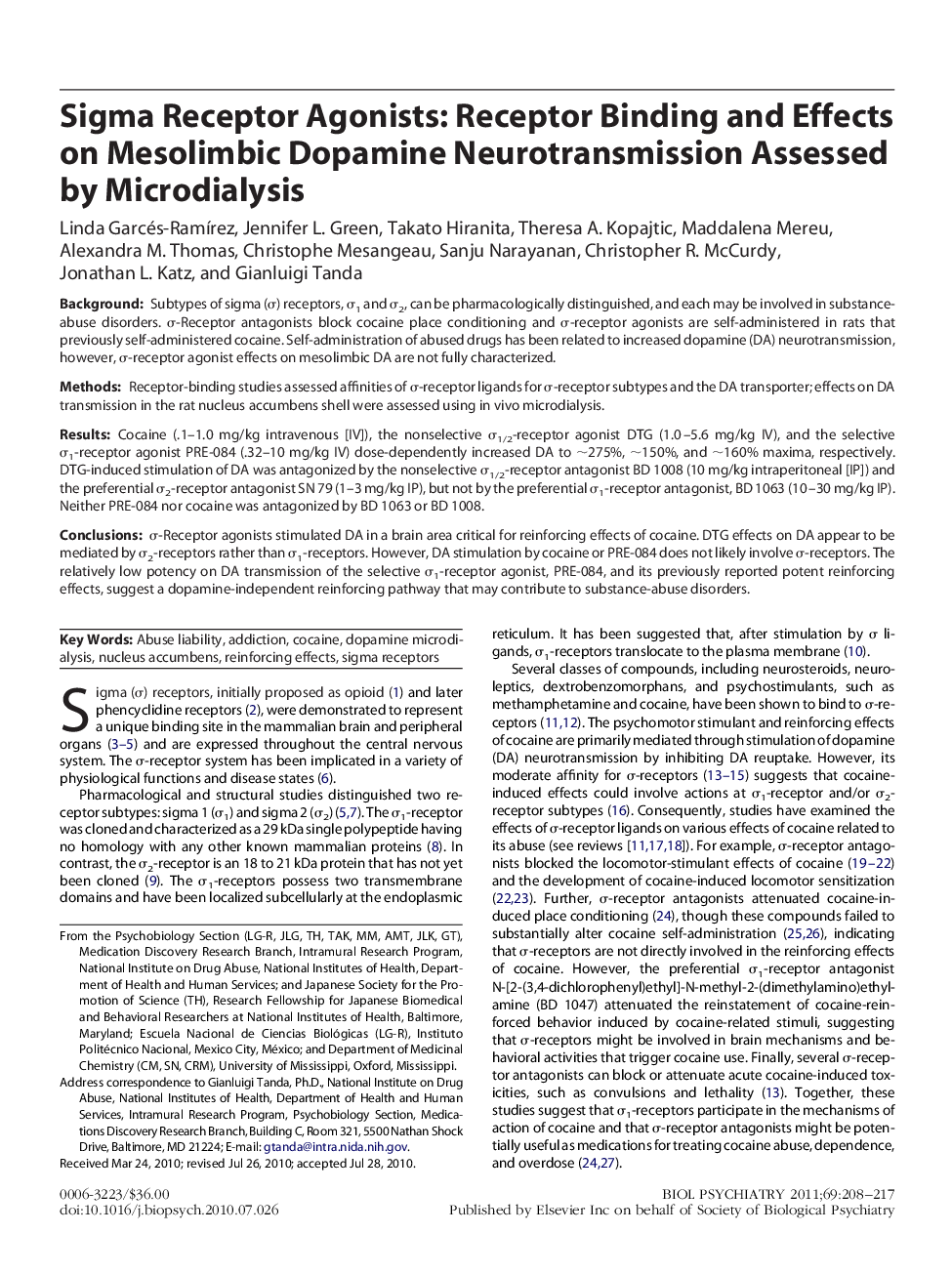| Article ID | Journal | Published Year | Pages | File Type |
|---|---|---|---|---|
| 4178931 | Biological Psychiatry | 2011 | 10 Pages |
BackgroundSubtypes of sigma (σ) receptors, σ1 and σ2, can be pharmacologically distinguished, and each may be involved in substance-abuse disorders. σ-Receptor antagonists block cocaine place conditioning and σ-receptor agonists are self-administered in rats that previously self-administered cocaine. Self-administration of abused drugs has been related to increased dopamine (DA) neurotransmission, however, σ-receptor agonist effects on mesolimbic DA are not fully characterized.MethodsReceptor-binding studies assessed affinities of σ-receptor ligands for σ-receptor subtypes and the DA transporter; effects on DA transmission in the rat nucleus accumbens shell were assessed using in vivo microdialysis.ResultsCocaine (.1–1.0 mg/kg intravenous [IV]), the nonselective σ1/2-receptor agonist DTG (1.0–5.6 mg/kg IV), and the selective σ1-receptor agonist PRE-084 (.32–10 mg/kg IV) dose-dependently increased DA to ∼275%, ∼150%, and ∼160% maxima, respectively. DTG-induced stimulation of DA was antagonized by the nonselective σ1/2-receptor antagonist BD 1008 (10 mg/kg intraperitoneal [IP]) and the preferential σ2-receptor antagonist SN 79 (1–3 mg/kg IP), but not by the preferential σ1-receptor antagonist, BD 1063 (10–30 mg/kg IP). Neither PRE-084 nor cocaine was antagonized by BD 1063 or BD 1008.Conclusionsσ-Receptor agonists stimulated DA in a brain area critical for reinforcing effects of cocaine. DTG effects on DA appear to be mediated by σ2-receptors rather than σ1-receptors. However, DA stimulation by cocaine or PRE-084 does not likely involve σ-receptors. The relatively low potency on DA transmission of the selective σ1-receptor agonist, PRE-084, and its previously reported potent reinforcing effects, suggest a dopamine-independent reinforcing pathway that may contribute to substance-abuse disorders.
